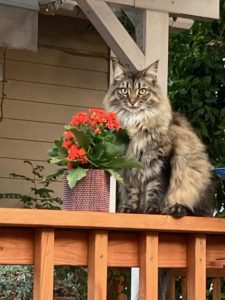 I went to a large nursery once in search of plants that are not toxic to cats. The nurseryman did some research and found a very long list of plants that are varying degrees of toxic to cats. The list of toxic plants was pages longer than the list of safe plants. So how do our outdoor cats survive? Well, they don’t typically eat
I went to a large nursery once in search of plants that are not toxic to cats. The nurseryman did some research and found a very long list of plants that are varying degrees of toxic to cats. The list of toxic plants was pages longer than the list of safe plants. So how do our outdoor cats survive? Well, they don’t typically eat 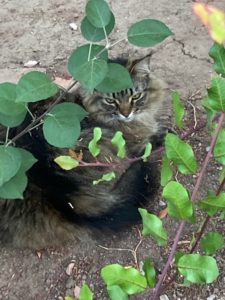 plants. It’s the indoor cats that are at the greatest risk. You bring in a lovely prayer plant, amaryllis , spider plant, or philodendron and your house cat will be intrigued. She may dig in the dirt, bat at the leaves, and possibly even chew on them. Cats do love eating a little green from time to time.
plants. It’s the indoor cats that are at the greatest risk. You bring in a lovely prayer plant, amaryllis , spider plant, or philodendron and your house cat will be intrigued. She may dig in the dirt, bat at the leaves, and possibly even chew on them. Cats do love eating a little green from time to time.
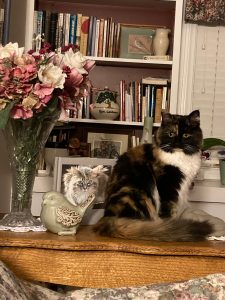 A bouquet of lilies, daffodils, or chrysanthemums with interesting leaves and a pretty bow around the vase will intrigue most housecats—the scent, the way the leaves bounce and sway and feel to the paws and the nose. Something like this will certainly get a cat’s attention and get him into terrible trouble if he tries to become too familiar with the bouquet.
A bouquet of lilies, daffodils, or chrysanthemums with interesting leaves and a pretty bow around the vase will intrigue most housecats—the scent, the way the leaves bounce and sway and feel to the paws and the nose. Something like this will certainly get a cat’s attention and get him into terrible trouble if he tries to become too familiar with the bouquet.
I will display a gift bouquet of roses in my house with my cat, or sunflowers, snapdragons, gerber daisies, freesia, if the accompanying leaves are safe—because those flowers are nontoxic. But many other bouquets are enjoyed on our outdoor deck so there’s no chance of Olivia taking a bite of them. Note: 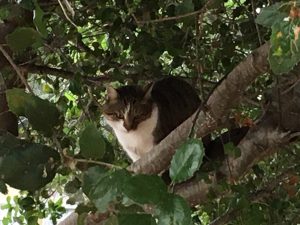 I like flowers, so I use fake ones in my arrangements inside the house.
I like flowers, so I use fake ones in my arrangements inside the house.
Rule of thumb, if you receive a bouquet, always, always check to find out what flowers and other plants are in it (there are apps for that) and if any of them are toxic to cats.
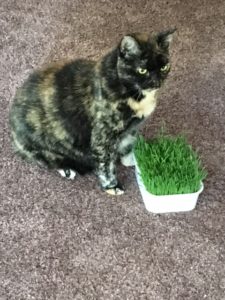 There are also many common foods we enjoy, but that are toxic to cats (and other animals). To mention a few, chocolate, coffee, grapes, raisins, dairy, onions, garlic, raw potatoes and tomatoes, bread, citrus.
There are also many common foods we enjoy, but that are toxic to cats (and other animals). To mention a few, chocolate, coffee, grapes, raisins, dairy, onions, garlic, raw potatoes and tomatoes, bread, citrus.
Don’t be fooled by the fact that the cat LOVES raisins or grapes or peanuts. As I understand it some dog food is also toxic to cats. So feed Fido and Fluffy separately if at all possible.
The next time you see a houseplant you just must have or someone brings you a bouquet, be sure to identify the a flowers and check to make sure they’re safe for cats. One way is by using the CatPoison-App.





